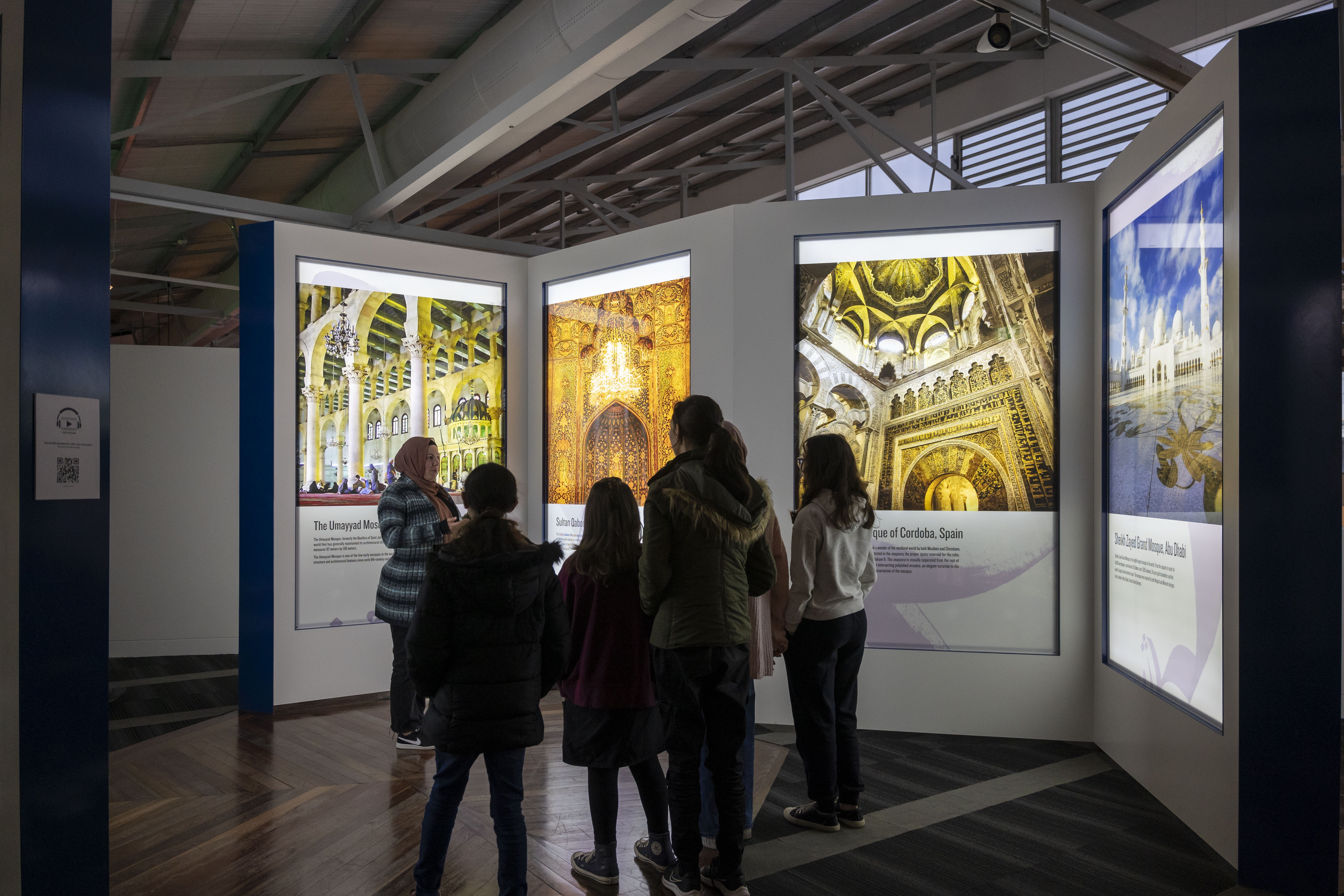Thursday 25th December 2025
Open Mon-Sat, 10am to 4pm. Closed Sunday and all public holidays. Closed 25 Dec - 1 January (inclusive)
Thursday 25th December 2025
Open Mon-Sat, 10am to 4pm. Closed Sunday and all public holidays. Closed 25 Dec - 1 January (inclusive)

The Islamic Museum of Australia, located in Thornbury in Melbourne’s north, is the only Islamic Museum in the country. From the outside, its modern architecture blends refined geometric patterns with a rusted steel facade. What I discovered inside wasn’t just a space to observe and learn – it was a space that invited reflection, understanding, and sparked genuine curiosity.
Right from the start, the staff were warm and welcoming – always happy to answer my questions about the stories behind various historical figures and artefacts. They made it easy to explore the museum at my own pace.
The museum features five interesting galleries:
Faith Gallery
The Faith Gallery offered an introduction to Islam and its core teaching, tracing the life of Prophet Muhammad (ﷺ) and the foundation of the religion. It also explores the role of women, marriage, and social justice, encouraging me to reflect on my own values and important aspects in my life. What stood out for me was one of the historical artefacts – a Quran that is nearly 200 years old.
Islamic Contributions to Civilisation
This gallery highlights groundbreaking innovations by Muslim thinkers dating back to 1000 CE. From the origins of coffee and soap to the inventions of cameras and vaccinations, it was facinating to see how these contributions continue to shape modern life. Interactive displays, such as a giant chessboard, made the experience engaging and fun.
Australian Muslim History
This gallery reveals a side of Australian history that is often unheard of, beginning with early connections between Makassan fishermen and Indigenous communities before European settlement. The exhibition also focuses on the Afghan cameleers, where I was able to educate myself on the vital role, they had in shaping Australia's early infrastructure and economy. I explored personal migration stories and the achievements of well-known figures across government, business, sport, and the arts.
Islamic Art
The Islamic Art gallery was one of my favourites – showcasing the impressive works by Muslim and non-Muslim artists. I was able to recognise this gallery’s themes of identity, culture, and faith in modern Australia through the paintings, sculptures, and installation on display.
Islamic Architecture
The Islamic Architecture gallery took me on a visual journey through some of the world’s most breathtaking buildings, from mosques to palaces. Large-scale photographs cover regions from the Middle East to Asia, highlighting the diversity and depth of Islamic design. A standout feature is the museum’s own minaret installation, complete with calligraphy and ambient sound, offering an immersive experience.
The museum also hosts temporary exhibitions, giving a visitor like me a reason to return. During my visit, I had the chance to experience Alaqah: Bonds of Connection – a moving exhibition by Yolŋu and Makassan artists that explores love, strength, and connections between Muslim and Indigenous communities through deeply meaningful artworks.
Not only is it open to the public, but the Islamic Museum of Australia also offers guided tours, educational programs for schools, and community workshops. These are thoughtfully designed to promote and provide deeper insights into Islamic history, art, and culture for learners of all ages.
The IMA is a must-visit. It builds cross-cultural understanding, fostering a deeper understanding of Muslims and Islam. It reveals a side of history that is often untold – not to dismiss what we already know, but to acknowledge that these historical Muslim figures were part of it and contributed to society in ways that are often overlooked.
The Museum is open from 10am to 4pm, Monday to Saturday.
Nada Ibrahim